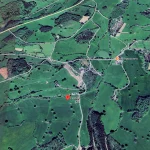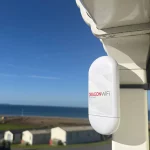Openreach FTTP – Final 10% of UK Likely to Cost £4000 Per Premises
The CEO of BT Group, Philip Jansen, has revealed how Openreach anticipates that reaching the final 10% of UK premises with 1Gbps capable Fibre-to-the-Premises (FTTP) broadband ISP technology is likely to require an “outlay of around £4,000 each to pass” (vs build costs of £300-£400 for the first 50% of premises).
At present Openreach aims to reach 4 million premises by March 2021 with FTTP and there’s an ambition for 15 million by around 2025 (out of c.30 million total). After that they also have an aspiration to reach “the majority of the UK, if the right conditions to invest are in place” (e.g. 20 year business rates holiday on new fibre, more skilled labour, easy migration from copper to fibre, easier wayleaves, mandated full fibre for new builds and access to large buildings with absentee landlords etc.).
The latest cost estimates for this are close to Ofcom’s arguably more optimistic model of FTTP deployment (here), which indicated that the capital expenditure needed to do FTTP for the first c.20 million UK premises is under £500 per premises but above that point it quickly rises to nearly £2,500.
Advertisement
We’ve always felt that £2,500 was a bit too conservative but accurately estimating such things is rarely easy and will vary between operators, depending upon the approach to deployment and business model of the operator. Clearly £4,000 is reflective of Openreach’s modelling but other operators may be able to do it for less (e.g. B4RN’s volunteer built network).
Jansen, who was speaking to shareholders after Friday’s results announcement, also confirmed that Openreach’s latest full fibre build update (here) would boost their rollout pace from 20,000 premises passed per week today to 30,000 per week by the end of this financial year (March 2020). So far 1.5 million premises have already been completed and Openreach’s Clive Selley said they added c.350,000 in the last quarter alone.
Philip Jansen, BT Group CEO, said:
“Alongside these enablers across the country, public funding will probably be needed to bring FTTP to the hardest to reach 10% of the UK population [mostly rural areas but a few urban ones too] and to address enduring mobile not spots. It is crucial at this that this public funding that is used as efficiently and effectively as possible without undue bureaucracy and duplication to make sure that the UK gets the maximum digital bang for its buck.
We agree that full fibre can be the platform for the UK’s future prosperity and we’re determined to lead the way. No company is doing more.”
Jansen also added that the operator was “ready” to train, recruit and re-prioritize their skilled labour into places that that would “help us to build at a pace that would meet Boris Johnson’s ambition for a huge step change by 2025.” Meanwhile the wait continues for the Government to reveal details of how it will achieve the new 2025 target for universal full fibre coverage, which is something that we examined in a bit more detail on Saturday (here).
Mark is a professional technology writer, IT consultant and computer engineer from Dorset (England), he also founded ISPreview in 1999 and enjoys analysing the latest telecoms and broadband developments. Find me on X (Twitter), Mastodon, Facebook, BlueSky, Threads.net and Linkedin.
« The Challenges of Boris Johnson’s 2025 Full Fibre for All UK Pledge

















































Comments are closed